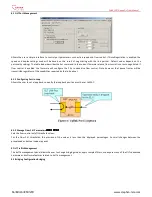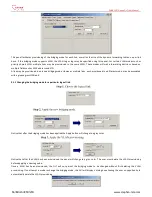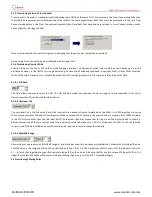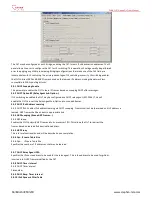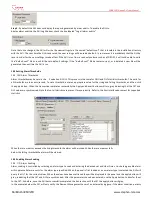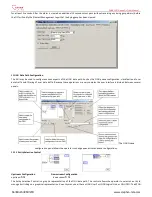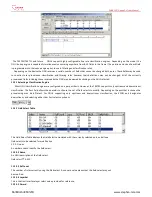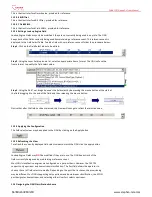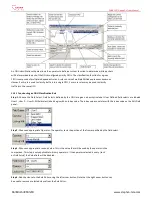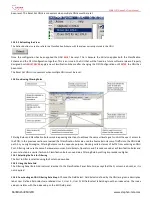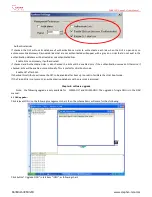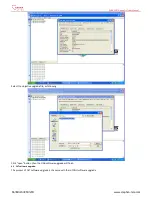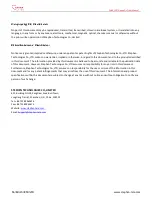
SNA8110T Gepon OLT User Manual
陈泽科技有限公司
www.stephen-tele.com
scheme with the FIFO configuration; this is INCORRECT behavior that will be fixed in a future version of the GUI. Well behaved host
software should apply the classification rules only after the ONU has been reset. The refresh button performs the converse function of
Apply, causing the GUI state to be updated to reflect the state of the ONU.
11.1.7 Saving the Configuration to the Hard Disk
Once a queue configuration has been created, it can be saved to the hard disk by entering a descriptive name for the configuration into
the Quck Cfg drop down box and clicking the Save button. The GUI will save both the Queue Configuration and the Classification
Scheme (Filtering Rules will not be saved). These attributes are stored in a binary file located in the distribution directory. This file is
called “OnuQueueCfgRepository.dat”. If desired the file may moved to a newer distribution to recover the saved
configurations.
11.1.8 Restoring the ONU to a Previous Configuration
To restore an ONU to a previous configuration, select the configuration from the Quick Cfg drop down box
and press the Apply button to transfer the stored configuration to the ONU.
11.1.9 Deleting a Saved Configuration
Once a configuration has been saved, it can be deleted by selecting it from the Quick Cfg drop down box or
typing its name and clicking the Delete button.
Notice that the GUI prevents the user from adding more FIFOs than the ONU supports. It will also prevent the user from adding a
second FIFO if there is no free space available.
The fee space available is clearly displayed so that it is easy to determine when there is no longer
sufficient resources.
It is important to note that not all configurations make use of the Flooding FIFO, however all FIFOs including the Flooding FIFO must be
allocated a minimum queue space of 2KBytes, to ensure that there is enough free space to hold a 1536 byte packet. The GUI enforces
this restriction.
Picking the right FIFO size is easy. In a typical configuration the ONU is Burst Tolerant to the provisioned FIFO Size. A typical PC running
Windows XP has a default TCP Window size of 17K. Therefore the FIFO should be at least 17K if it is to carry PC data. Typically 4-10K is
enough for voice traffic depending on the type of service. Generally speaking 32K of Burst Tolerance is more than adequate for high
throughput applications such as FTP.
The ONU
MUST
be reset to complete the configuration process (this can be performed with the GUI). It should be noted that the GUI
applies the new Classification scheme with the FIFO configuration; this is INCORRECT behavior that will be fixed in a future version of
the GUI. Well behaved host software should apply the classification rules only after the ONU has been reset.
11.2 Selecting Lookup Fields


